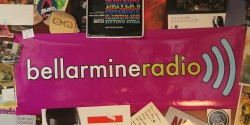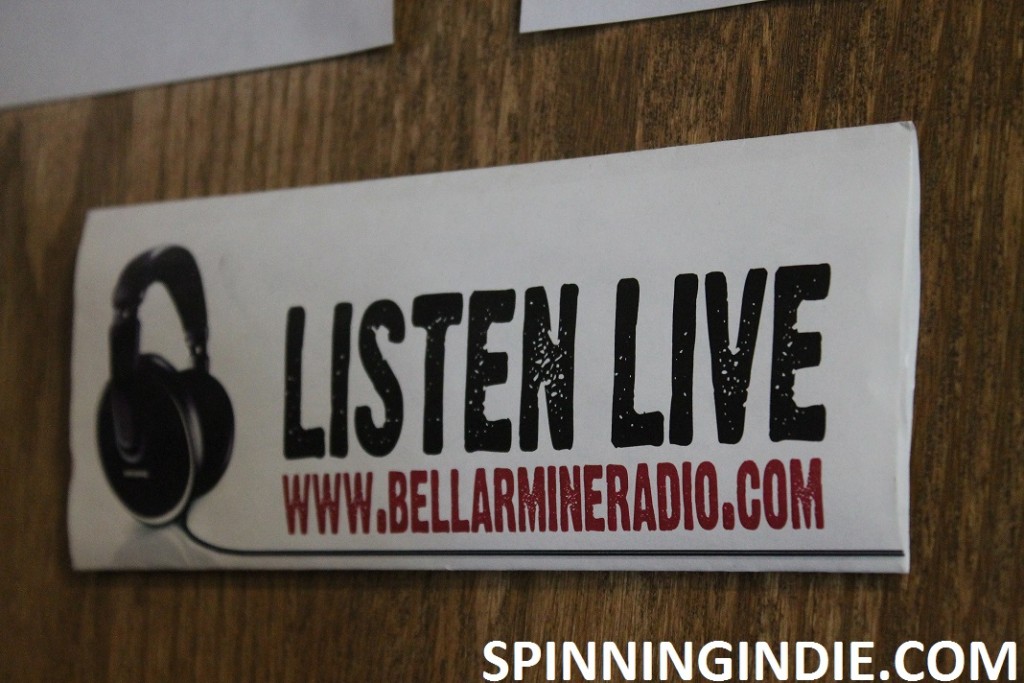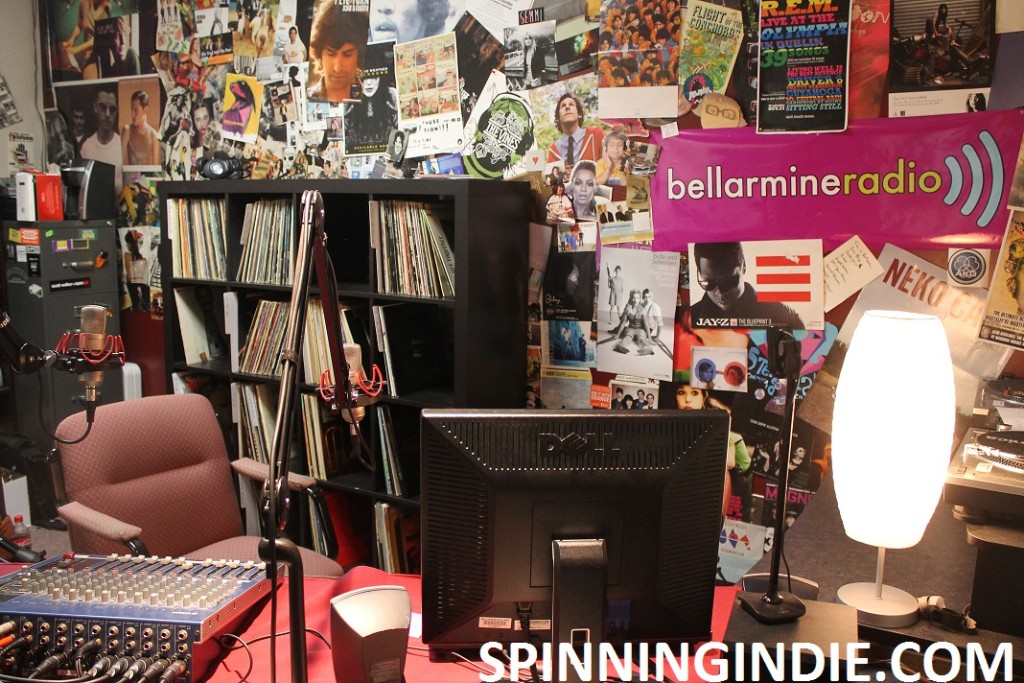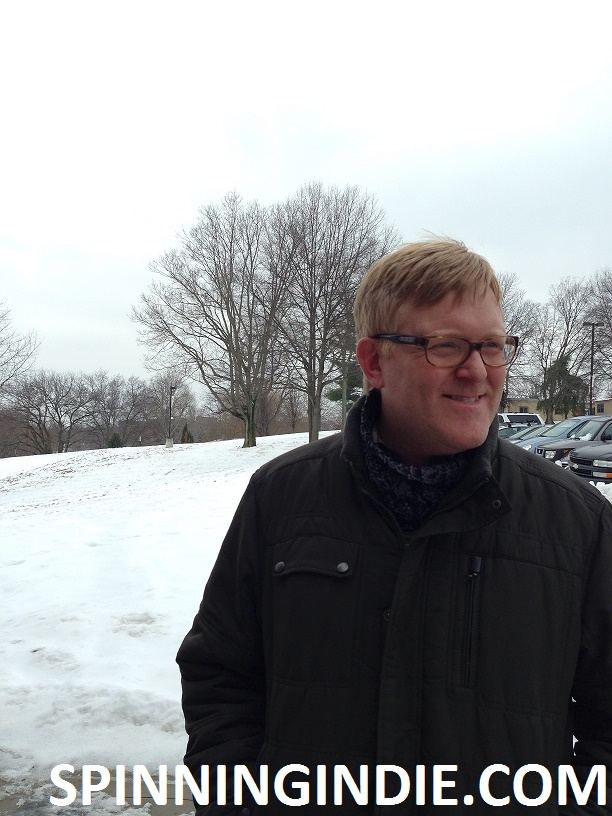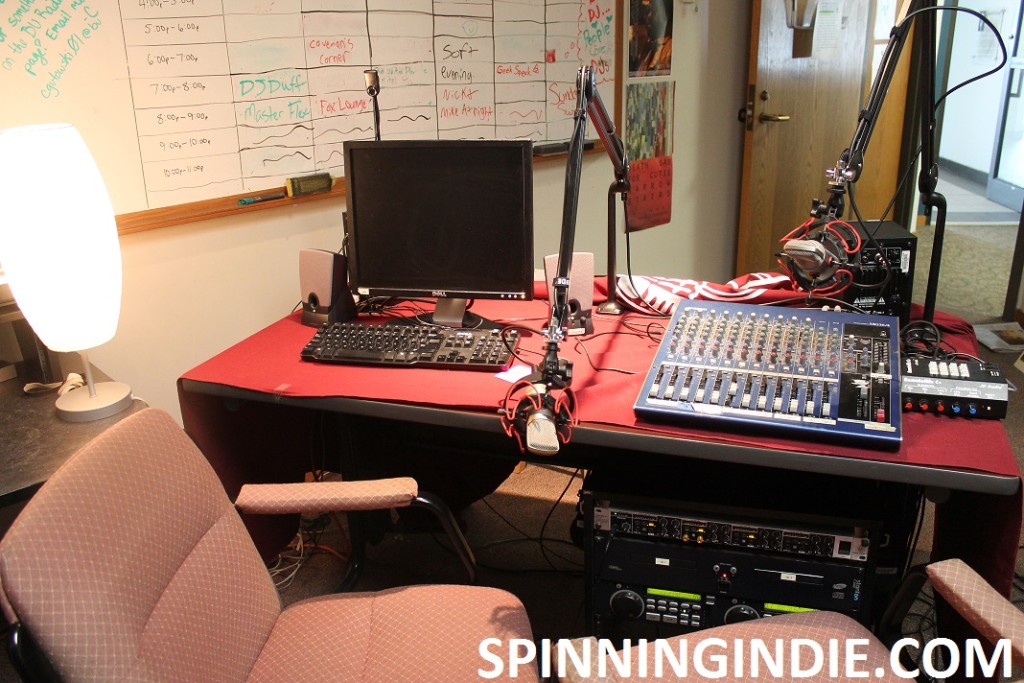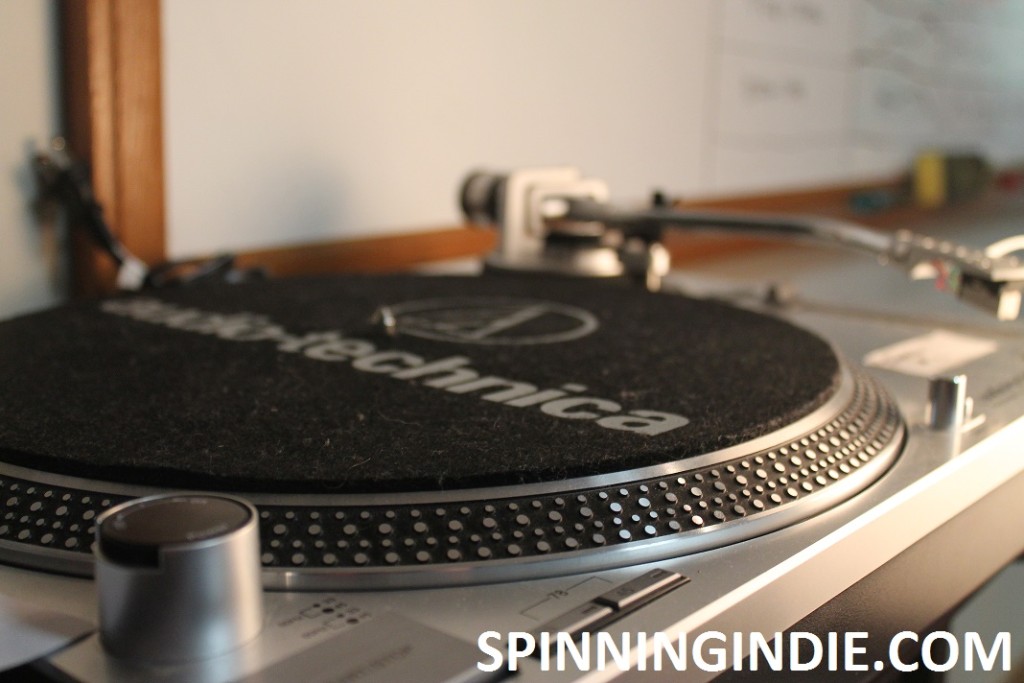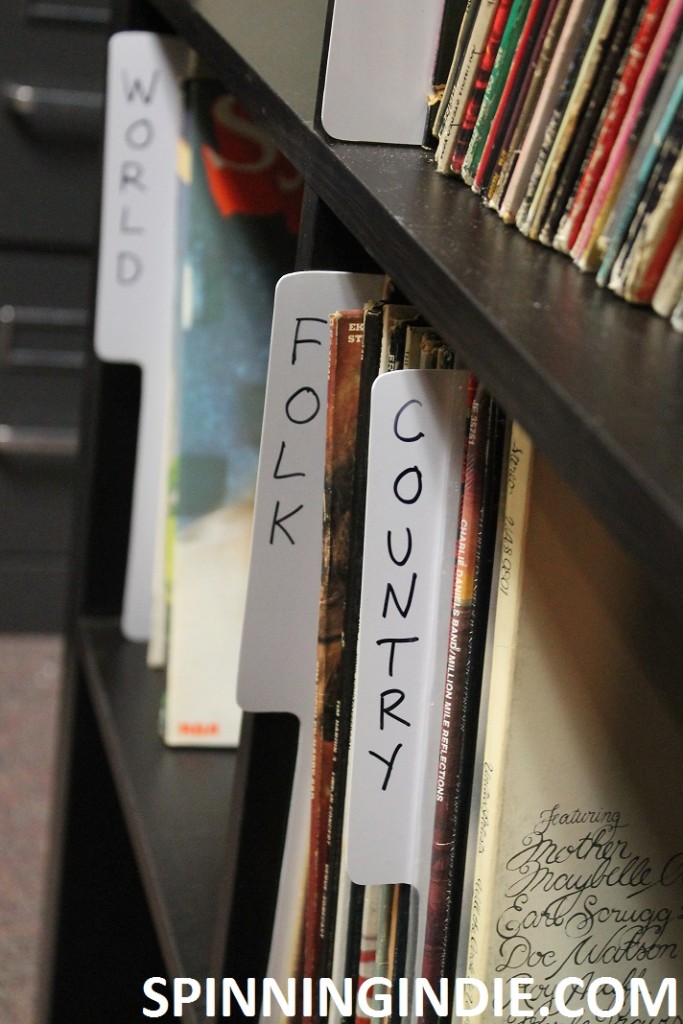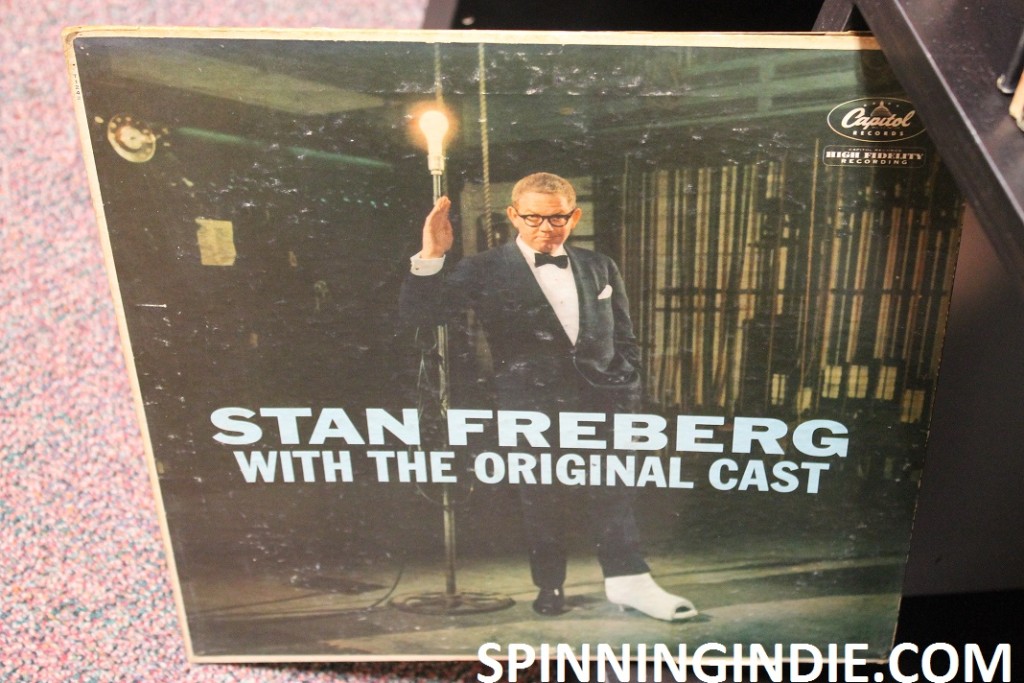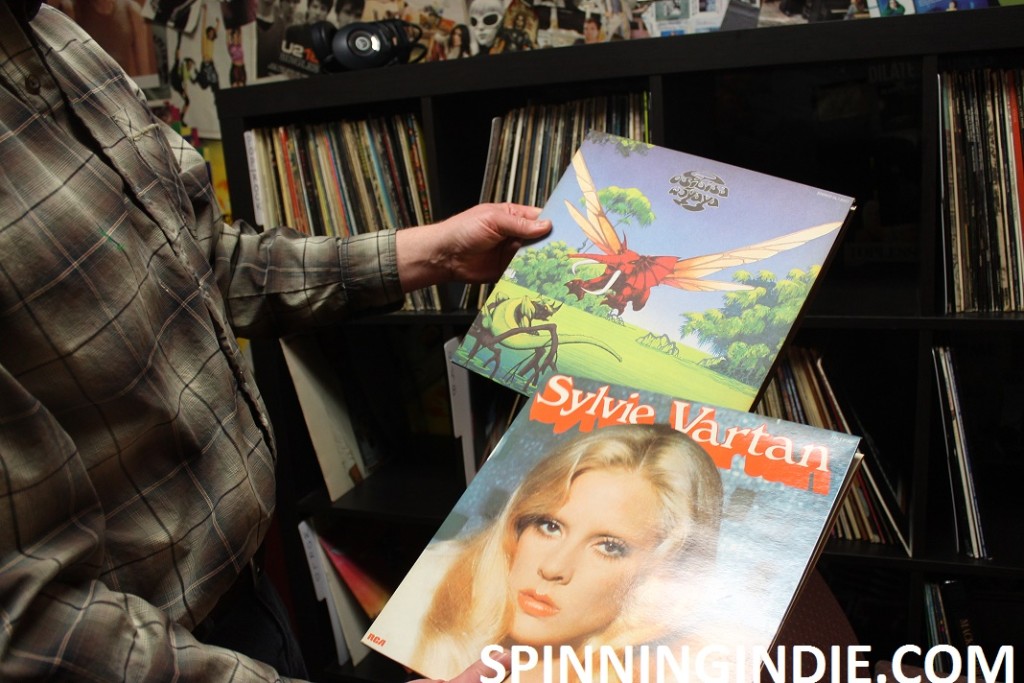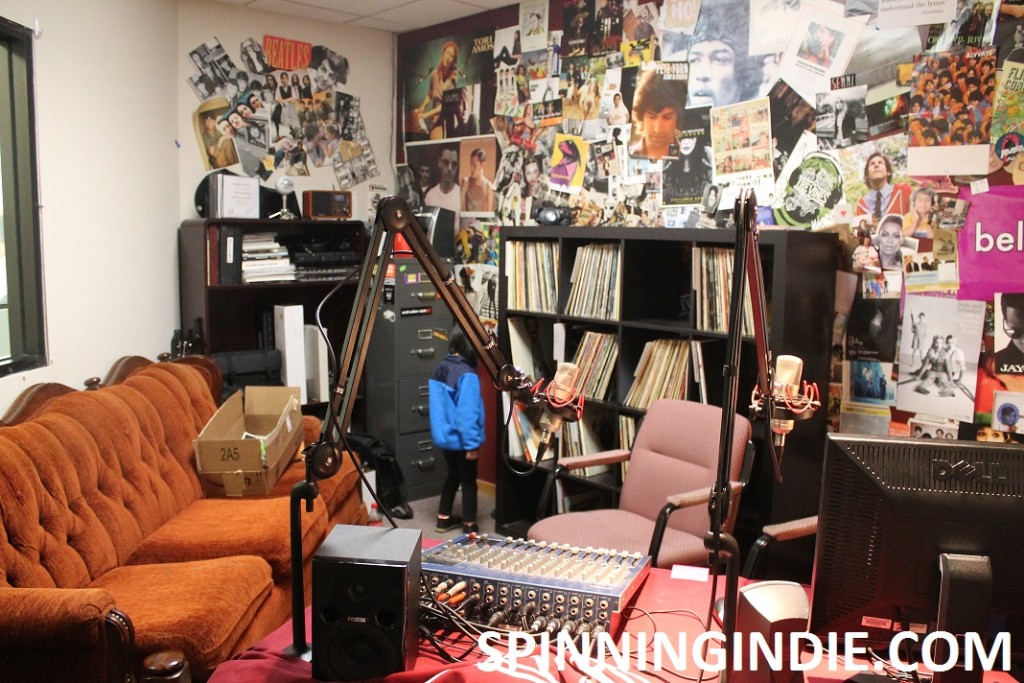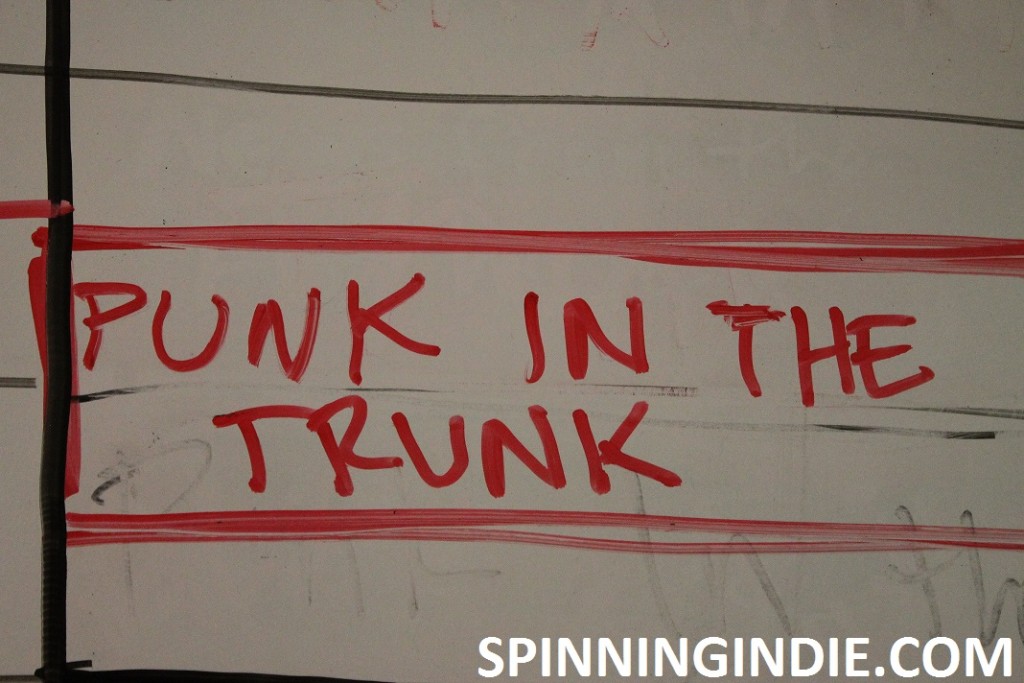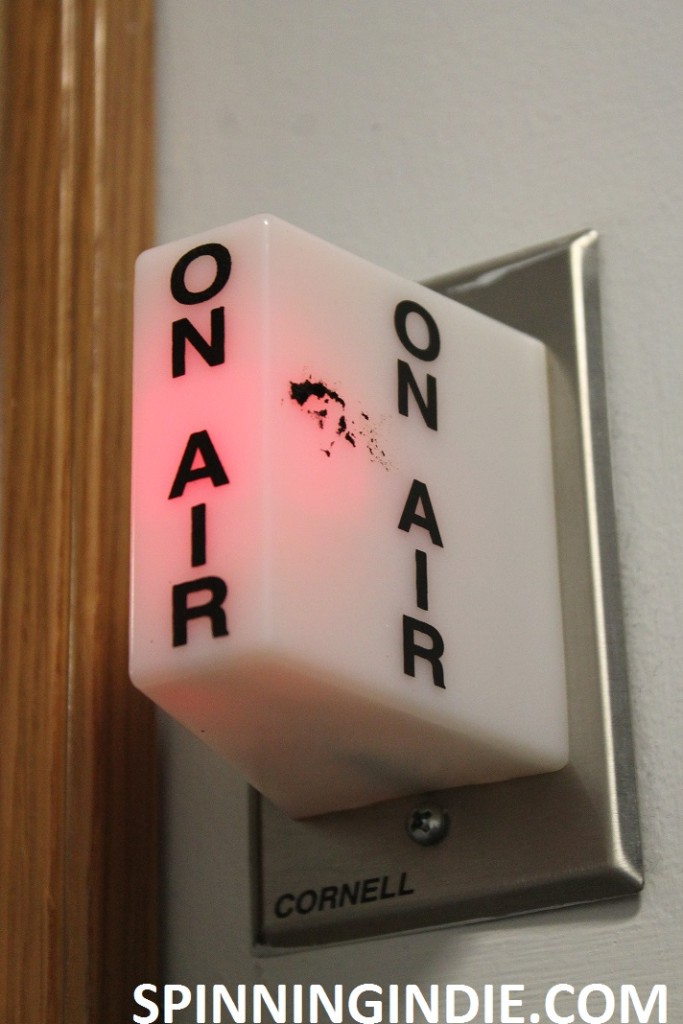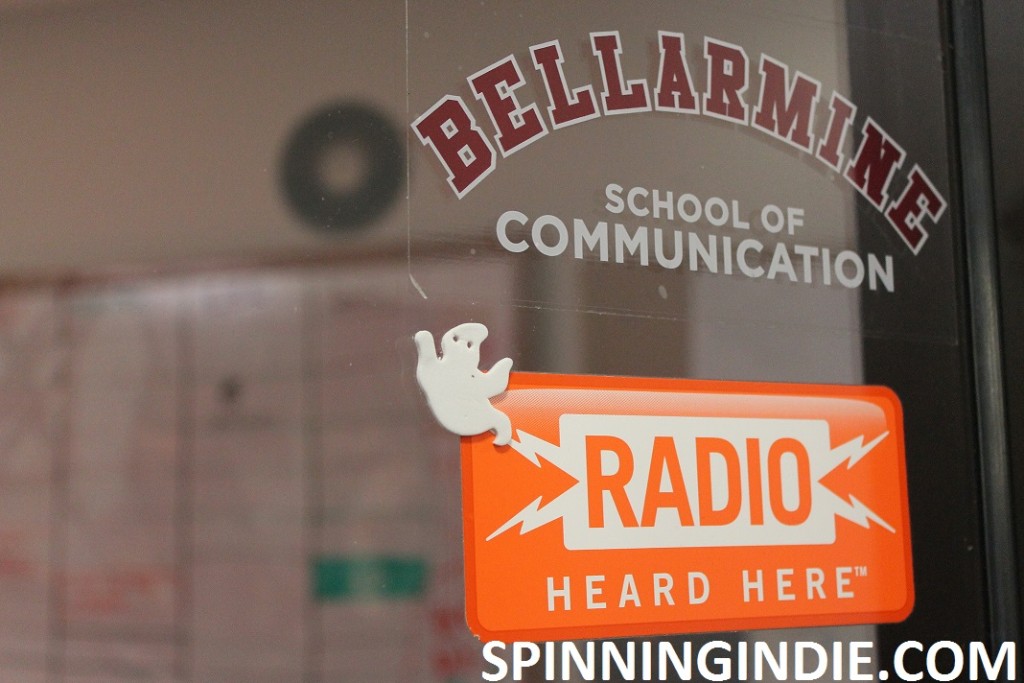It’s sort of a weird coincidence that in the past few months I visited radio stations at two different institutions called Bellarmine. I wrote about my trip to see Bellarmine College Preparatory’s AM station KBCP in San Jose, California a few weeks ago and now I’m covering my visit to Bellarmine University’s radio station, Bellarmine Radio, in Louisville, Kentucky.
Bellarmine Radio was my final radio station visit in Louisville and the trip was easily arranged because I’m good friends with the station’s faculty advisor Kyle Barnett and I was staying with him for part of my visit. Barnett and I first met while in graduate school at Bowling Green State University. We were in different, but closely related programs (Popular Culture for me and American Culture Studies for Kyle), but we were also both DJs at our campus radio station WBGU-FM. After Barnett joined the faculty at Bellarmine, I was excited to learn about his involvement with the student radio station. He’s shared tales with me over the years and I even did a Skype conversation with some of his radio students recently.
Because I knew a bit of the back story, it was nice to finally get to see Bellarmine Radio in person. Barnett and I trekked over to campus with his pre-school aged daughter on a Sunday afternoon (February 22). It was pretty quiet on the snow-covered campus, although there were some prospective students taking part in a luncheon when we arrived at the School of Communication building where Bellarmine Radio in housed.
The station was dark and wasn’t streaming on the day of my visit due to a major crash on the Bellarmine Radio computer. Barnett said that they speculated that the computer had overheated, perhaps due to lack of ventilation. This put the station on hold for a bit, as they figured out how to get everything, including the schedule, up and running.
Bellarmine’s streaming radio station was launched in 2005 in a closet in the basement of the Student Center. Eventually it moved to its current location upstairs from the Bellarmine cafeteria. Barnett arrived on campus in 2006, just after the station moved to its current digs. In this video from 2009, Barnett and the students talk about the first four years of the station, which was a period of tremendous growth for Bellarmine Radio as it transformed into more of a traditional college radio station. In the video, Barnett explains the lasting nature of radio, saying, “Radio’s obituary has run many many times. But the thing won’t stay buried. It’s still with us and people continue to listen.”
During my visit, Barnett told me that one of his biggest challenges upon his arrival at the Bellarmine station was to “create a college radio culture where one hasn’t really existed before.” He said that initially he had to really work to convince his students to listen to “college radio in general,” since most of them never had. He explained some of the steps that he took to get students on board with his idea of what college radio should be, telling me that rather than taking giant leaps, he started out by meeting his students half-way.
Instead of forcing them to listen to out-there avant garde music or noise, Barnett was satisfied with students playing a “weird Taylor Swift remix” or “indie songs” heard in commercials, as well as “unusual tracks and B-sides.” Barnett eloquently talks about the task of building a student-oriented streaming college radio station from the ground up in a 2013 piece for Antenna, in which he also points to the ongoing struggles as well.
Bellarmine Radio is student-run and Barnett said that the station recently appointed a new Music Director who has so far been “pretty hands off” after a period of a few months without a Music Director. As I looked around the station, I was struck by the interesting assortment of physical music, including classic rock albums, new age environmental sounds, mainstream retro pop from Donny Osmond, a recording of a vintage radio Western, a Stan Freberg comedy album, and some pretty out there vintage records (including one with disaster messages for radio stations). Barnett told me that a diverse collection of LPs had recently been donated by a grad student who had acquired the material from a great uncle who had passed away. After my visit, Barnett told me that after cataloging all the material from that collection, he feels like the station has a “greatly improved range” of sounds, including spoken word.
Additionally, Barnett said that he was preparing to add a “broad assortment” of music (2000 tracks) to the station’s digital automation system. As the music library grows, he told me that it’s his hope that Bellarmine Radio can “become the college station that we want to become.”
As always, I’m interested in learning about the history of college radio on every campus that I visit. It’s purported that Bellarmine University previously had an over-the-air radio station (most likely carrier current) at some point in its history (the school was founded in 1950). Barnett said that so far he’s had little luck tracking down information about the details of this mysterious station (I couldn’t easily find anything online, either), telling me, “no one around really remembers it.”
Barnett added, “We’ve recently heard that Joseph Clayton, former CEO and chief at Sirius Satellite Radio — was on that carrier current program. He did a show about bourbon. But in our conversation with him (it was brief), we forgot to ask him about call letters. We’re determined to rectify that. We’re also talking to the campus historian in hopes of recovering the history of radio at Bellarmine that we’re carrying on.”
Currently there are around 20 students involved with Bellarmine Radio, but that “ebbs and flows through the year,” according to Barnett. He told me that they are starting to do more outreach to students on campus across different departments. Barnett explained,
…we shouldn’t just wait for students out of Comm or students who approach us — we have to get out across the university. We’ve already done a bit of this and have big plans for the fall. We’re working on connecting with Music Technology students on campus, so we can play their original compositions, have them assist with audio production when we record visiting artists, and asking them to compose material for shows.”
Reflecting back on both our visit and on the past year at Bellarmine, Barnett told me over email, “We face a lot of challenges, but I’m still optimistic. The struggles…are ongoing, but things get better all the time — slowly, but surely.”
Thanks so much to Kyle for the tour of Bellarmine Radio! This is my 85th station tour report. In the pipeline I have a few visits to stations in D.C. and Virginia. See my most recent field trips on Radio Survivor and see all of my station field trips on Spinning Indie.

